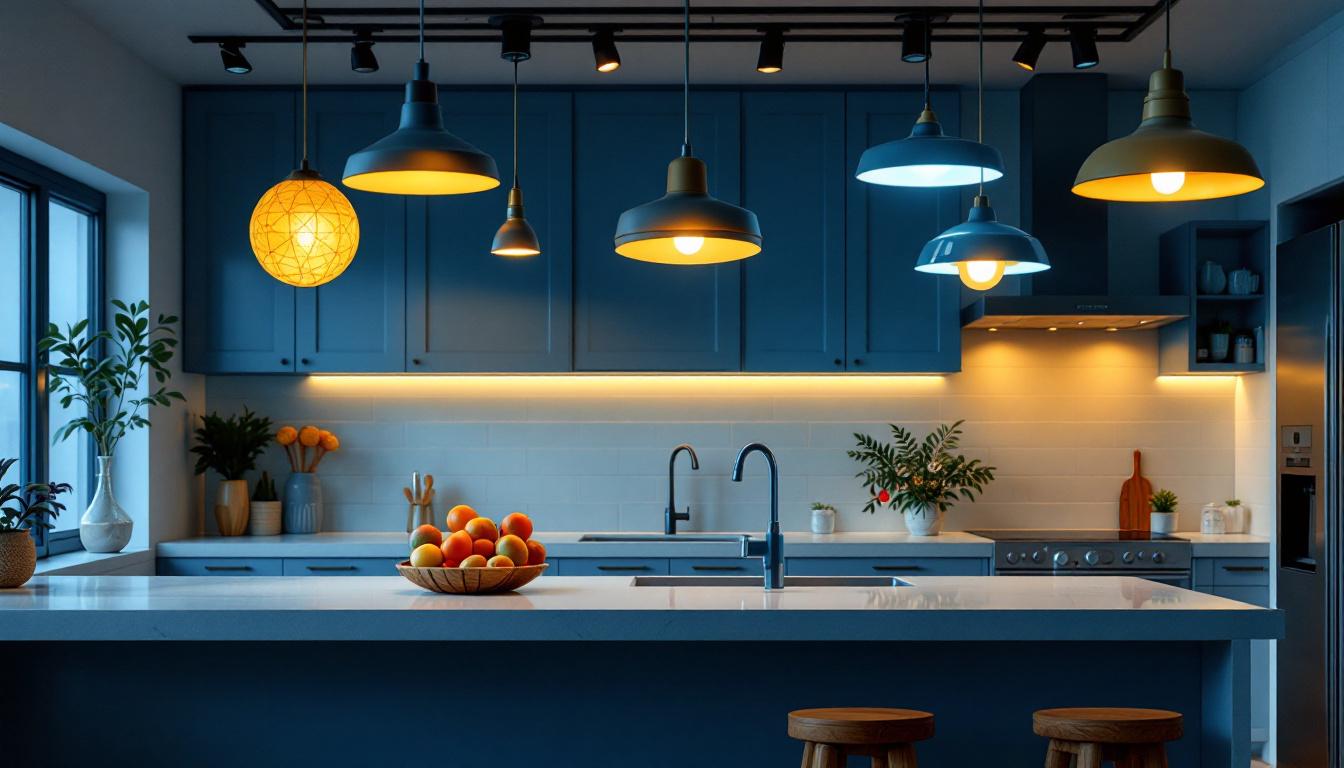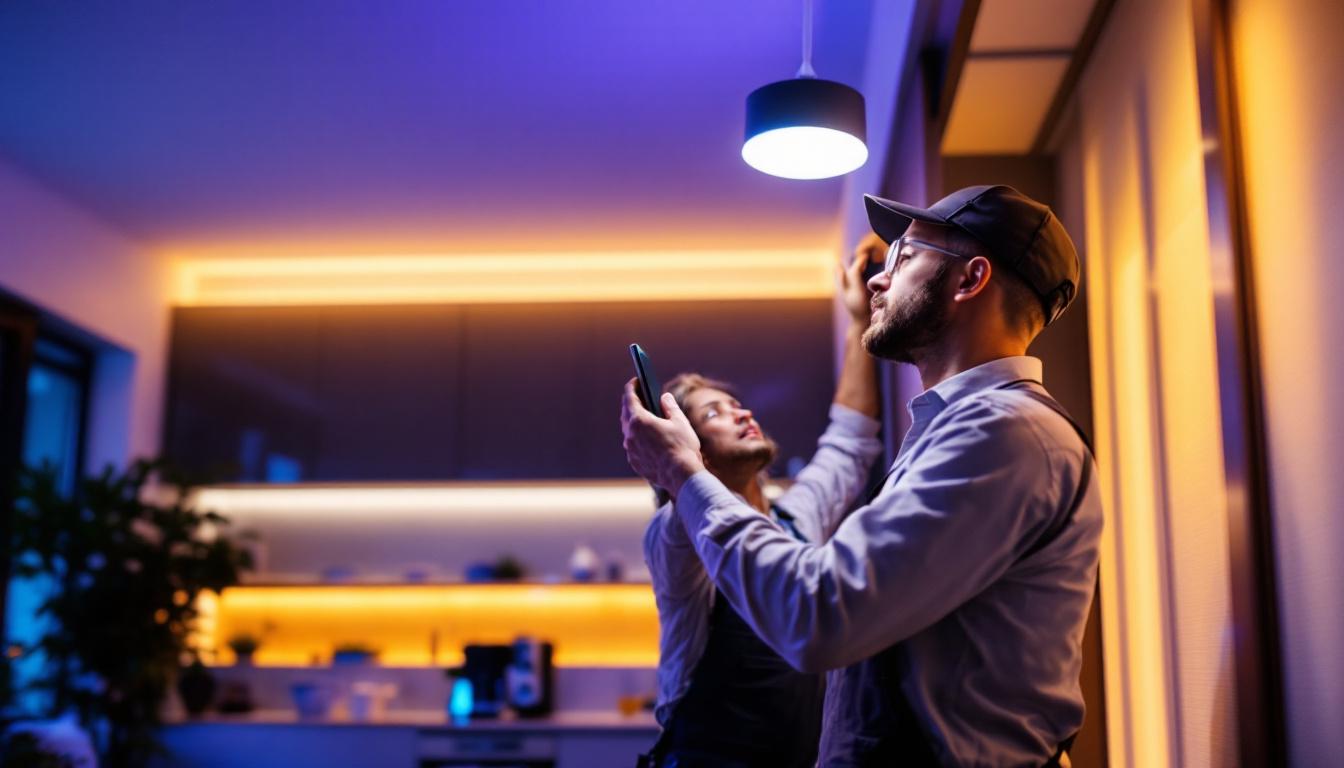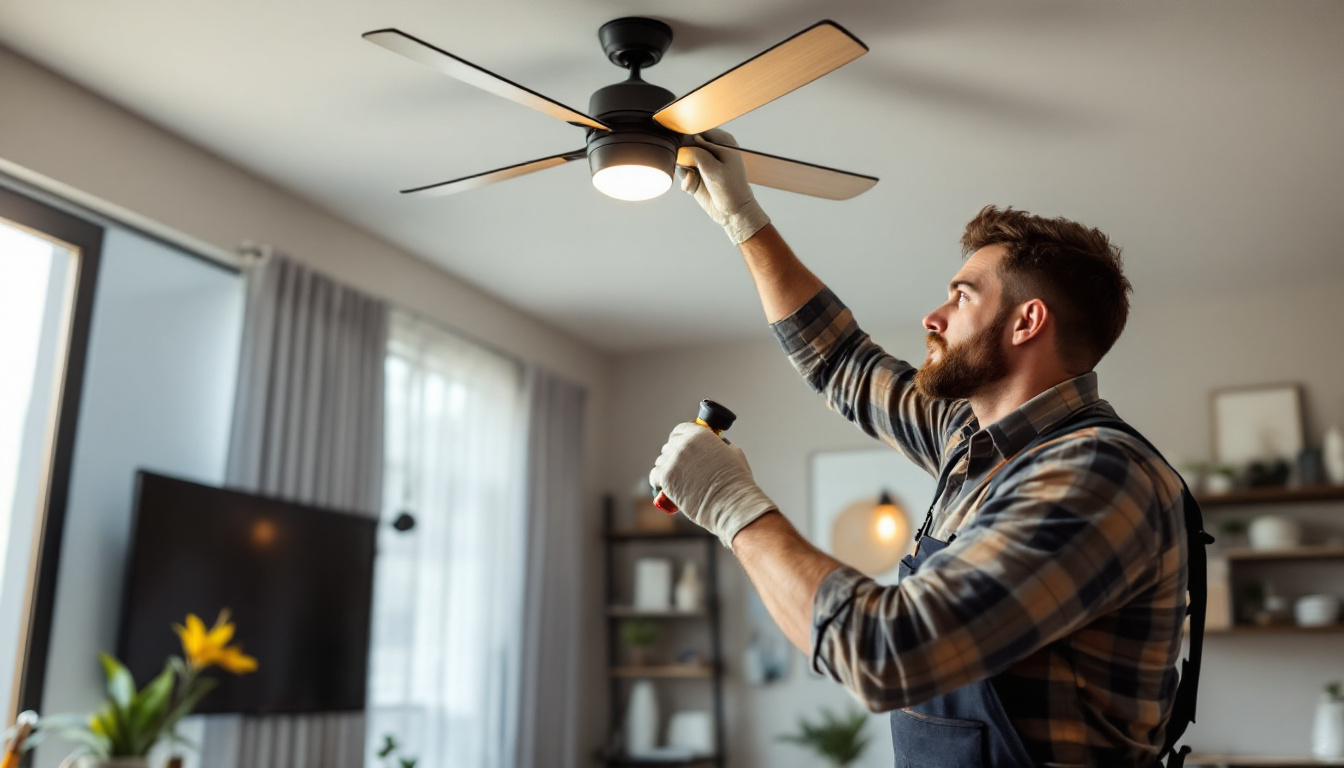
In the realm of kitchen design, lighting plays a pivotal role in both functionality and aesthetics. While many lighting contractors are well-versed in the basics of illumination, there are often overlooked aspects that can significantly enhance the overall kitchen experience. This article delves into various factors that lighting contractors should consider when selecting and installing ceiling kitchen light fixtures, ensuring that their clients enjoy a well-lit and inviting space.
The kitchen is a multifaceted environment where various tasks occur, from cooking and meal preparation to entertaining and socializing. As such, its lighting requirements differ from those of other rooms in the home. Understanding these unique needs is essential for lighting contractors.
One of the primary considerations in kitchen lighting is the balance between task lighting and ambient lighting. Task lighting focuses on specific areas where activities take place, such as over countertops, islands, and sinks. This type of lighting should be bright and direct, allowing for precision in food preparation and cooking.
On the other hand, ambient lighting creates a warm and inviting atmosphere. It should be evenly distributed throughout the kitchen to eliminate shadows and provide a comfortable environment for social interaction. Lighting contractors must ensure that both types of lighting are adequately represented in their designs, as neglecting one can lead to a less functional space. Additionally, the color temperature of the light plays a significant role; warmer tones can enhance the inviting feel of the kitchen, while cooler tones can help with visibility during detailed tasks.
Layering light is a technique that combines different lighting types to achieve a versatile and dynamic space. In a kitchen, this can involve using ceiling fixtures, pendant lights, under-cabinet lighting, and even natural light from windows. Lighting contractors should consider how these layers interact with one another, creating a harmonious balance that caters to various activities throughout the day.
For instance, during the day, natural light may be sufficient for most tasks, but as evening approaches, the layered lighting should seamlessly take over, ensuring that the kitchen remains functional and inviting. This approach not only enhances usability but also adds depth and character to the space. Moreover, incorporating dimmers into the lighting design allows for adjustable brightness levels, enabling homeowners to set the mood for different occasions, whether it’s a lively dinner party or a quiet family meal. The strategic placement of lights can also highlight architectural features or decorative elements, further enriching the kitchen’s aesthetic appeal.
The choice of ceiling light fixtures can significantly impact both the functionality and style of a kitchen. Lighting contractors must consider various factors when selecting fixtures, ensuring that they align with the overall design and purpose of the space.
One common oversight is the size and scale of the light fixtures in relation to the kitchen’s dimensions. A small fixture in a large kitchen can feel lost and ineffective, while an oversized fixture in a compact space can overwhelm the room. Contractors should take accurate measurements and consider the proportions of the kitchen when selecting fixtures.
Additionally, the height at which fixtures are installed plays a crucial role. For instance, pendant lights over an island should be hung at a height that allows for unobstructed views while providing adequate illumination for tasks. Ensuring that fixtures are appropriately sized and positioned enhances both functionality and aesthetics. Moreover, the use of multiple fixtures can create a layered lighting effect, which not only adds depth to the space but also allows for flexibility in lighting options. By incorporating dimmers, homeowners can adjust the brightness according to the time of day or the mood they wish to create, further enhancing the kitchen’s versatility.
Another critical aspect of fixture selection is ensuring that the chosen lights align with the kitchen’s overall design theme. Whether the kitchen boasts a modern, rustic, or traditional style, the fixtures should complement the existing elements. For example, sleek and minimalistic fixtures work well in contemporary kitchens, while ornate chandeliers may be more suited to traditional designs.
Lighting contractors should encourage clients to consider the materials, colors, and finishes of the fixtures, ensuring they harmonize with cabinetry, countertops, and other design elements. This attention to detail can elevate the kitchen’s aesthetic and create a cohesive look. Furthermore, the use of energy-efficient LED bulbs can enhance the design while being environmentally friendly. These bulbs not only reduce energy consumption but also come in various color temperatures, allowing homeowners to choose a warm or cool light that best fits their kitchen’s ambiance. Incorporating smart lighting solutions can also add a modern twist, enabling homeowners to control their lighting through apps or voice commands, seamlessly blending technology with style.
As sustainability becomes increasingly important in home design, lighting contractors must prioritize energy-efficient solutions when selecting ceiling kitchen light fixtures. This not only benefits the environment but also helps clients save on energy costs.
One of the most straightforward ways to enhance energy efficiency is by selecting the right bulbs. LED bulbs, for instance, consume significantly less energy than traditional incandescent bulbs and have a longer lifespan. Contractors should educate clients about the benefits of LED lighting, including their lower heat output and reduced environmental impact.
Moreover, dimmable LED fixtures can offer additional energy savings while providing flexibility in lighting levels. This feature allows homeowners to adjust the brightness according to their needs, further enhancing the kitchen’s functionality.
Incorporating smart lighting technology is another way to promote energy efficiency in kitchen lighting. Smart fixtures and systems allow homeowners to control their lighting remotely, set schedules, and adjust brightness levels based on specific tasks or times of day. Lighting contractors should consider recommending smart solutions that integrate seamlessly with existing kitchen designs.
These technologies not only contribute to energy savings but also enhance the overall user experience, making it easier for homeowners to create the perfect ambiance for any occasion.
While selecting the right fixtures and bulbs is essential, proper installation is equally crucial. Lighting contractors often encounter challenges during the installation process that can affect the performance and aesthetics of the lighting.
One common oversight is the electrical capacity of the kitchen. Contractors must ensure that the existing wiring can support the new fixtures, especially when upgrading to more powerful or multiple light sources. This may involve consulting with an electrician to assess the load capacity and make necessary upgrades.
Additionally, proper placement of switches and dimmers is vital for user convenience. Contractors should consider the flow of the kitchen and position controls in accessible locations, allowing homeowners to easily adjust lighting as needed.
Another installation challenge is ensuring that fixtures are easily accessible for maintenance. Many ceiling fixtures require periodic cleaning or bulb replacement, and contractors should consider the height and placement of fixtures to facilitate this. For example, fixtures installed too high may necessitate the use of ladders or special tools for maintenance, which can be inconvenient for homeowners.
Designing with accessibility in mind not only enhances the longevity of the fixtures but also ensures that homeowners can maintain their lighting without hassle.
In addition to aesthetics and functionality, safety is a paramount concern in kitchen lighting. Properly designed and installed lighting can help prevent accidents and enhance the overall safety of the space.
High-traffic areas, such as walkways and entry points, should be well-lit to prevent trips and falls. Lighting contractors should strategically place ceiling fixtures to illuminate these areas effectively. Additionally, under-cabinet lighting can help illuminate countertops and prevent shadows, enhancing visibility during meal preparation.
Moreover, ensuring that all areas of the kitchen are adequately lit can help homeowners navigate the space safely, especially during nighttime hours. This consideration is particularly important for families with young children or elderly members who may be more prone to accidents.
In some cases, incorporating emergency lighting solutions can further enhance kitchen safety. Battery-operated or hardwired emergency lights can provide illumination in the event of a power outage, ensuring that homeowners can safely navigate the space until power is restored.
Lighting contractors should discuss these options with clients, emphasizing the importance of safety in kitchen design. By addressing potential hazards through thoughtful lighting design, contractors can enhance the overall safety and functionality of the kitchen.
In conclusion, ceiling kitchen light fixtures are a critical component of kitchen design that lighting contractors must approach with careful consideration. By understanding the unique lighting needs of kitchens, selecting appropriate fixtures, prioritizing energy efficiency, addressing installation challenges, and enhancing safety, contractors can create well-lit, functional, and aesthetically pleasing spaces.
Ultimately, a comprehensive approach to kitchen lighting design not only elevates the overall experience for homeowners but also positions lighting contractors as experts in their field. By staying informed about the latest trends and technologies, contractors can ensure that their clients receive the best possible lighting solutions for their kitchens.
As the heart of the home, the kitchen deserves thoughtful lighting that enhances its beauty and functionality. By avoiding common oversights and embracing a holistic approach to lighting design, contractors can deliver exceptional results that leave a lasting impression.
Ready to take your kitchen lighting designs to the next level? At LumenWholesale, we provide lighting contractors with an exceptional range of spec-grade ceiling kitchen light fixtures that combine quality, affordability, and convenience. Say goodbye to inflated markups and hello to our unbeatable wholesale prices, all while enjoying the benefits of free shipping on bulk orders. Elevate your lighting projects with our reliable, high-performance products and experience the difference that true value can make. Discover our extensive selection and start transforming kitchens into beautifully lit spaces today. Wholesale Lighting at the Best Value.

Discover essential tips and insights for lighting contractors on effectively utilizing Uvo Light technology.

Discover expert tips and exclusive deals on ceiling fans tailored for lighting contractors.

Discover expert tips and innovative solutions for installing LED lighting in drop ceilings.

Discover the insider tips and expert advice from lighting contractors on selecting and installing replacement ceiling fans.